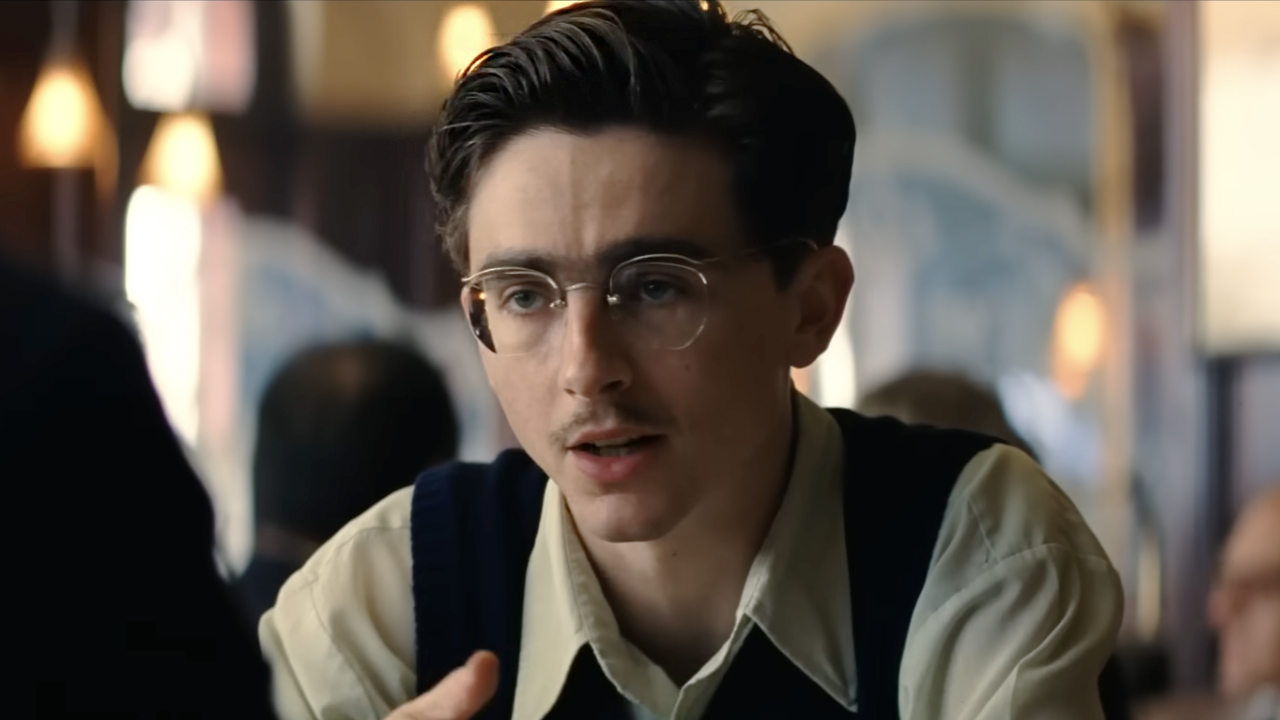FlixWorthy Boldly Goes Star Trekkin'

Welcome back to FlixWorthy, your guide to Netflix streaming! Yet again we're bringing you a handful of new or notable selections from Netflix's Instant Watch catalogue. Some will be classics, some will be little-seen gems, some will be shows you might have missed, and some...some will be crap so awful they simply has to be seen to be believed.
This week has seen a major catalogue update for Netflix, and we're focusing on the arrival of one of the best-loved SF franchises of all time. That's right, Star Trek has come to Netflix, and today FlixWorthy is running down the new arrivals and suggesting a few side dishes to complement your main course. And before we dive in, no, I don't know why Deep Space 9 is the lone Trek hold-out. I'll do my best to find out what the deal is and let you fine folks know when I do. In the meantime, here's what's FlixWorthy this week, kids...
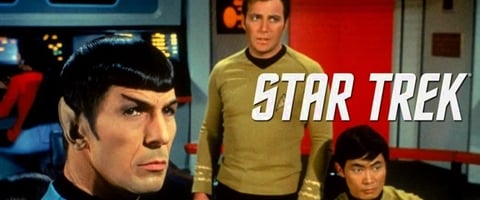

Star Trek: The Original Series
(1966-1968, TV-PG, Three Seasons, HD)
This is where it all started. A show that became a phenomenon that became a franchise. For all its cheesy moments, what would the modern landscapes of science fiction and television look like without the exploits of Kirk, Spock, and McCoy? Would we ever have seen Babylon 5 or Farscape or Firefly? And while there are certainly some low points – getting through the third season requires some dedication – there are also many classic moments to be found. Spock mind-melding with the Horta in “Devil in the Dark.” The death of Edith Keeler in “City on the Edge of Forever.” Every Trek series that came after tried to recapture the chemistry and magic of the original, and failed more often than not, largely because the strength of TOS rested in the three iconic characters at its center: Kirk, Spock, and McCoy. While the Treks that followed introduced plenty of memorable characters, nobody has ever recreated that simple and elegant trifecta of will, head, and heart.
Double-Feature It With:
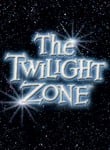
Your Daily Blend of Entertainment News
(1959-1963, TV-PG, Five Seasons, HD)
If there is another American science fiction series as iconic and canonical as the original Star Trek, it is unquestionably Rod Serling’s Twilight Zone. Like Trek, it has thrived through several generations because of its talent for using the trappings of genre to tell timeless human stories. And all five seasons are submitted for your approval…in HD, no less.


Star Trek: The Next Generation
(1987-1993, TV-PG, Seven Seasons)
Next Gen has a rocky start. If you haven’t seen those first two seasons in a while, go in prepared to be underwhelmed. Let’s be frank: many of these episodes are just bad. Still, once the writers and cast found their rhythms and figured out what sort of stories they were trying to tell, Next Gen evolved into a worthy successor to its parent series. Fans will never forget the cliffhanger ending to “The Best of Both Worlds, Part One,” which saw Picard turned into a Borg and a stern Riker ordering the Enterprise to open fire on their former captain. It was the definition of an unforgettable season finale, and it removed all doubt that Next Gen was capable of smart, addictive storytelling. And sure, there were weak moments and clichés aplenty: broken holodecks, transporter malfunctions, and the evolution of the “Shut up, Wesley!” meme years before we even had an internet with which to spread it. Of the four Trek series Netflix has added, this is the one I’m most excited to revisit.
Double-Feature It With:

(1997-2006, TV-14, 10 Seasons)
If you had asked me in the late ‘90s to guess which SF property would someday rival Trek for sheer number of spin-offs, I very much doubt I would have placed my money on the Showtime spin-off of a Roland Emmerich movie with MacGyver playing the Jack Burton role. But here we are, 14 years and several Stargate incarnations later.
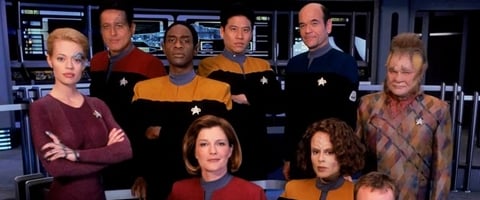

(1995-2000, TV-PG, Seven Seasons, HD)
Ah, Voyager. After being a life-long Trek fan, Voyager was where they lost me. All the problems that had occasionally cropped up in Next Gen were magnified to the extreme in Voyager. The bland, toothless storytelling. The ever-present “reset button” that ensured the status was returned to quo by each episode’s end. After three decades, Star Trek had finally, tragically, completed its transformation from an imaginative universe to be explored into a product that must be protected, and that truth left Voyager crippled from its first moments out of space dock. Never has the battle between commerce and creativity been better displayed than in Voyager. While the show’s writers occasionally managed to spin gold out of straw, the defining color of Voyager would instead be silver -- as in the skintight silver catsuit Jeri Ryan was dipped in. If ever there’s a clear sign that you have given up and embraced the lowest common denominator, it’s introducing a Borg character who looks like a supermodel and dresses in fetish wear. The fact that this show survived seven seasons is a testament to both Paramount’s marketing machine and the loyalty of fans desperate to stay true to their favorite franchise, even at its lowest point.
Double-Feature It With:

(1999-2002, TV-14, Four Seasons)
Farscape is the anti-Voyager. It was the little show that could, a wholly original, delightfully strange creation that trafficked in flawed, complicated characters and introduced us to a marvelous and dangerous new universe. If you’ve never given Farscape a chance, now’s the time to heed astronaut John Crichton’s clarion call: “Look upward, and share in the wonders I’ve seen.” Hell, this writer suggests you wouldn’t be ill-served by skipping Voyager entirely and diving straight into Farscape.
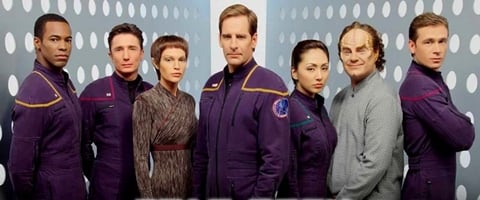

(2001-2004, TV-PG, Four Seasons, HD)
Enterprise was an odd duck. It was emblematic both of Paramount's desperation to figure out a way to reinvigorate the brand, and their fear of venturing too far from proven ground. Over the course of its four seasons, it wandered through standard disaster-of-the-week plotlines, "temporal cold wars," 9/11 metaphors, and a final season brimming over with old-school continuity throwbacks ranging from smooth-headed Klingons to green slave girls. When it worked, Enterprise produced some solid moments, but most of the time it could be summed up by its top-40 style theme song: different simply for the sake of being different, but without a recognition of what changes actually needed to be made. It didn't help that this new/old Enterprise was under the command of Captain Archer, a bland character whom actor Scott Bakula never seemed to settle into. Yes, while Enterprise probably didn't deserve all the flack it got at the time, by the end of its run, it was clear that televised Trek was dead in the water, and that if the franchise was to flourish in the new century, it was going to require a major overhaul...
Double-Feature It With:
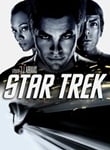
(2009, Rated PG-13, 126 min.)
Ladies and gentlemen, I give you the "major overhaul." Whether you like the changes made by JJ Abrams and company, there's no question that their relaunch (not reboot) of Trek put the franchise back in the public consciousness in a major way, and secured Trek's future at least for a little while. It's a deeply flawed but unquestionably entertaining adventure that is strongest in its cast and action elements. If Abrams and screenwriters Roberto Orci and Alex Kurtzman can build upon that promising foundation and prune out the silly slapstick, Trek should be able to continue going boldly for decades to come.
To read the FlixWorthy archives, click here!
